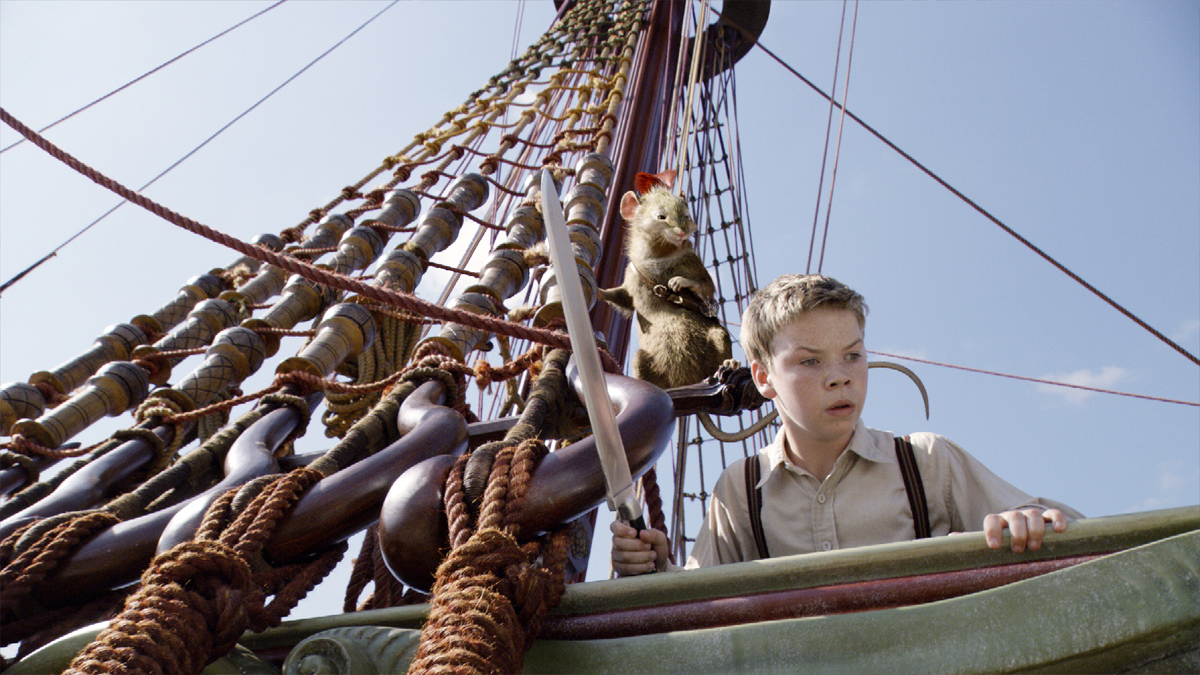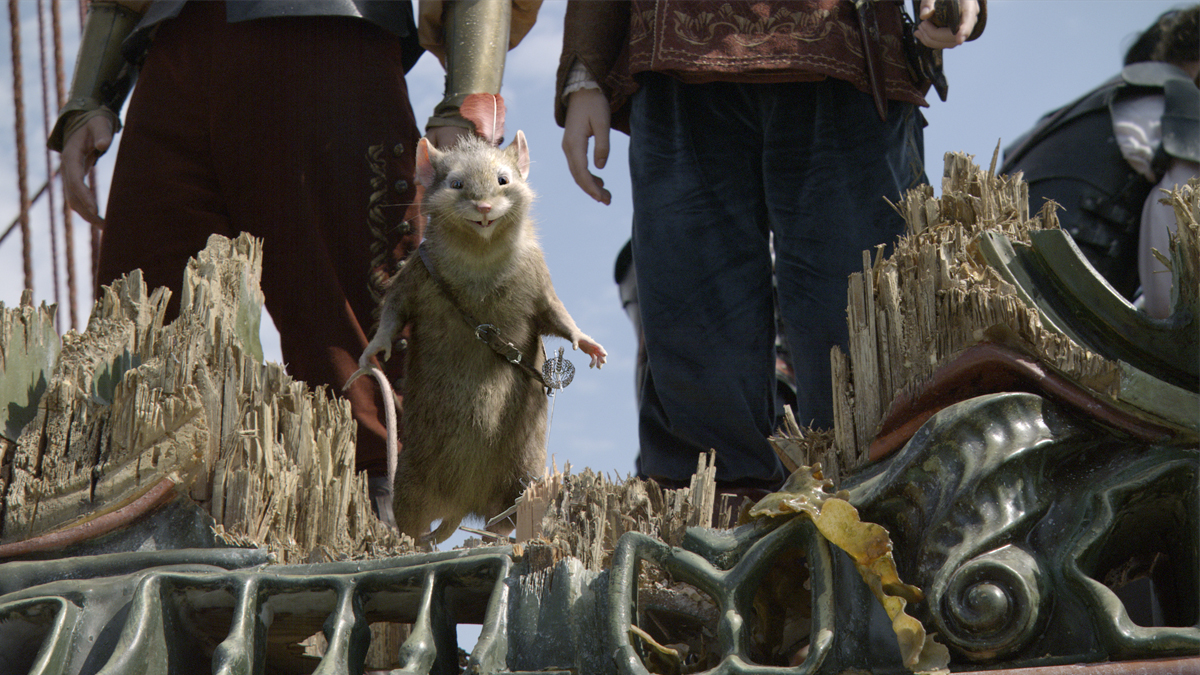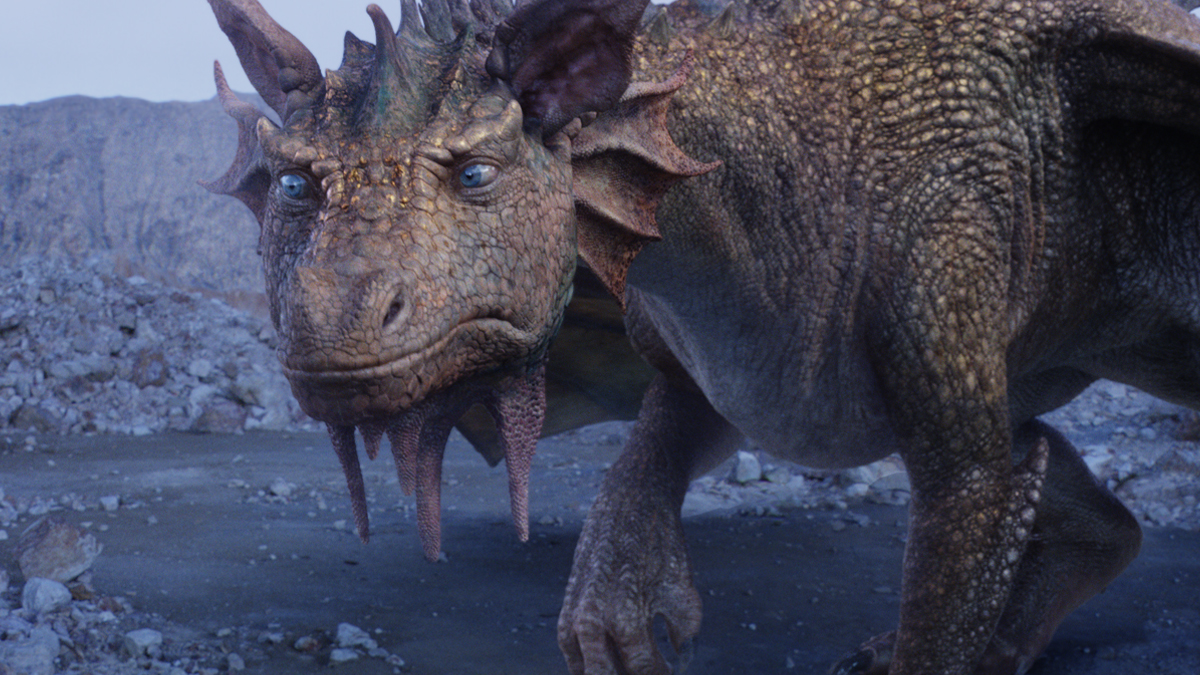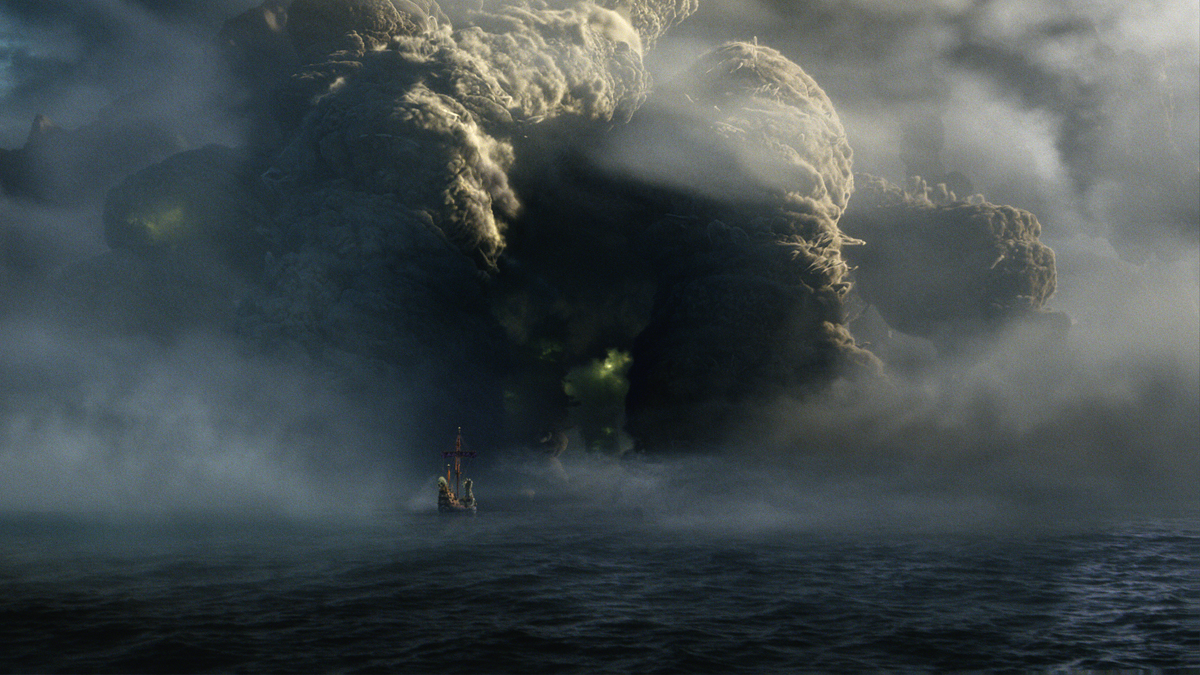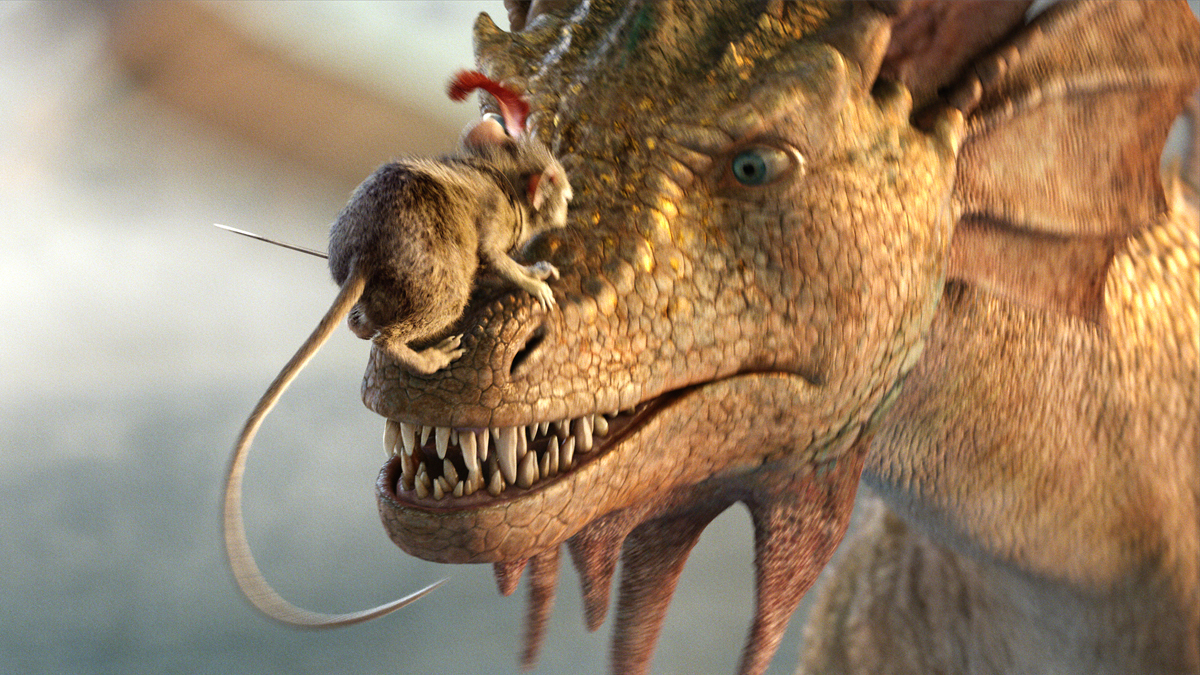Adam Valdez began his career at Tippett Studio in 1990 where he worked on great projects such as JURASSIC PARK or STARSHIP TROOPERS. After a transit at PDI, he joined the team at Weta Digital working on the first two LORD OF THE RINGS. In 2004, he moved to London and worked since then at MPC.
What is your background?I began working on visual effects in 1990, at Tippett Studio. I was lucky to join when miniature work was the primary tool set. Over time we learned the computer by necessity. I then spent a couple of years at PDI before going to Weta in 1999. That was the very beginning of the LORD OF THE RINGS movies there, and we had a lot to build and get organized for the movies, and Weta itself. After four years there I moved to England to join MPC, where I am now a visual effects supervisor and part of the company’s management team.
How was your collaboration with Angus Bickerton and Michael Apted?
Really good. Michael trusted Angus, and I feel Angus trusted us. Michael stayed focused on the film, the story, what he wanted out of each scene. That really helps us when the director gives us space while also being decisive. That said Angus brought a lot to the show, designing solutions to tricky scenes. You can’t expect anyone to have all the answers when you begin, so you just hope that the collective will work well together, and help each other find the right answers as you go. I think we had that on this film.
What are the sequences made by MPC?
We contributed 700 shots in 30 different scenes. Highlights are:
– The debut of the Dawn Treader, arriving to save the kids as they have been transported to Narnia.
– Scenes of Reepicheep and the boy Eustace, as they meet and have a really cool sword fight across the ship’s decking.
– A storm at sea, with lots of fully CG water and ship shots.
– When Eustace is transformed into a Dragon, we have some initial flying scenes as he tries to communicate to his cousins, but ends up damaging the ship. The Dragon Eustace quickly helps out when the sea provides no wind for the ship’s sails, and he has to pull the boat with his tail. Again we did more shots of the Dawn Treader travelling in different scenes and times of day.
– The film’s last act is built around this massive misty island which is more like a giant living entity. We created Dark Island for outside wide views, and then an elaborate interior environment. Suddenly they find themselves battling with an enormous Sea Serpent, and for about 200 shots, everything but the actors and the boat’s deck was created at MPC.
– Finally the evil mist dissipates, and our heroes discover a Sea of Lillies, leading to Aslan’s country.
Can you explain how was the shooting involving Reepicheep?
Reepicheep scenes were straight forward to shoot. Will Poulter, who plays Eustace, did a great job of both action and physical comedy. Normally we would have a simple object representing where Reepicheep was. In the case of the big sword fight scene, some very good previs was done by Mike Makara’s team, and that helped everyone understand what they were shooting.
What are the technical improvements of Reepicheep from NARNIA 2?
He didn’t change that much in his technical implementation. We changed his face model slightly – moving the eyes forward for better closeups – and aged his body and fur groom a little. The animation rig was also rebuilt from scratch, to give better control and speed to the animators. This included a bit of work to his mouth.
The integration of Reepicheep in the environments and with the characters is impressive. How did you achieve that?
I think our hair rendering and lighting was improved on this film. The lookdev and lighting guys, lead by CG Sup Kevin Hahn, really attained a high level of photographic believability in his integration. And of course our compositing team, lead by 2D sup Charley Henley brought it all together. We take a mixed approach of scientific based lighting with lighter and compositor control to fully realise our CG integration. You start with all the reference, HDRI photography, and reality based shading, and then you work that, dial it in by eye, until you have the materials and light behavior which also has appeal to it. Reepicheep needs to feel in the shot, but he also has a soft, cute quality. I find that even though our shader writers, look dev people, lighters and compers are doing everything possible to get it technically correct, they still have to watch a character as it passes through different lighting environments. We work as a team, reviewing past successes and current shots to make sure Reepicheep always feels and looks like Reepicheep. It’s a lot of work!
What was the biggest challenge with Eustace the dragon?
Probably again finding and then keeping a consistent, unique quality to his skin under different lighting conditions. I mean he was a pretty difficult character in a lot of respects: facial design, skinning and deformation, texture detail. And he was a very saturated, rich looking creature. So you’re in that place where you’re mixing fantasy and reality, and that’s always tough. This film had lots of work in the sky, which is a tough one – because we don’t often witness objects floating in the sky – so it was tricky to make him feel like he was in a vast space while in close up, for example.
Have you used filmed elements of Will Poulter for the facial animation of the dragon?
Will did film one small moment for us, while we were shooting in Australia. It was referenced, but really the rhythm of the scene changed once we got the dialogue from Simon Pegg, and our animation supervisor Gabriele Zucchiele
What were your references for the Sea Serpent and the Evil Mist?
The Sea Serpent went through several designs. A great designer we often work with, Stephane Levallois, provided this really far out design which everyone liked. Maybe it was going to be too scary, but we went for it. In fact the film makers wanted it to have a stage further for the last part of the battle – somewhere to go – so we designed this fully articulated body which splits open revealing all these little sharp arms. With this kind of stuff there really isn’t reference – but our art director Virginie Bourdin did shoot a bunch of fish, ocotopus and such creatures for master texture work. This was used directly by the asset guys to build the creature.
The evil mist was a slow evolution as well – something we found along the way. Actually in our first weeks on the show the studio wanted to know just what this thing would be, and we did a test composite using some fx renders of underwater explosions we had done for GI JOE. Charley Henley retimed this material, warped it, and eventually put it on top of a matte painting done by Paul Campion. Angus wanted to imply more of a corporeal feeling – that it had almost a giant octopus like body with arms reaching out. That was our basic design going forward, but the trick was then how not to make it look like a volcano or hurricane – but something alive and new. Again, we referenced volcanoes and large scale pyroclastic events, but found the distinctive factor was how it moved – harkening back to the original comp test. Carlos Ramos did some great simulation work here, creating a throbbing, ebbing sort of feel on a large scale.
How did you animated the Sea Serpent and the hundreds of little paws?
Lead Rigger Ben Jones actually wrote a script in Maya which gave the animators some automation for this. This provided a bed of disgusting, boiling for the bulk of them. But the animators did dial in specific animation on lots of shots. Luckily the little claws were only out for the last beat of the scene!
The battle between the Dragon and the Sea Serpent is truly spectacular. Everything is in CG, it must have been a real headache to do. Can you explain the creation of this sequence and how you manage it?
This scene took many passes to come together. The previs was worked on for over a year by Mike Makara’s team. The shooting cut of this work had lots of inconsistencies due to the long time span, but in the end in captured the intended action. We shot from that, for weeks, on the blue screen stage in Australia, on the deck of the Dawn Treader. There were giant water canons, the ship was rocking, the damage to the boat was being built up – it was an interesting shoot. Michael Apted was pretty amazing how he kept all the continuity in his head, and adapted various new beats of action he wanted to establish with the actors. To keep the audience with the heroes as the fight progressed. Once we had an assembly, our layout team, headed by Paul Arion, began the painstaking process of establishing spatial continuity, while recreating the basic blocking of the serpent so that editor Rick Shane could get a meaningful cut together. After that, the animators worked through the scene, piece by piece, largely on a schedule determined by the needs of the water effects guys. We would present this work, get notes, and then the animation went through technical animation for skinning, fx, lighting, etc. The compositing group was simultaneously setting up the environment based on fx-renders of the dynamic columns, fx-renders of mid ground standing mist, and environmental matte painted dome elements from our environment guys. So it all game together piece by piece, based on a strong foundation.
How did you handle the enormous number of particles for the Evil Mist and the digital ocean?
Not easily. These types of simulations are mainly difficult creatively, and then the big challenge is in rendering. We have techniques at MPC for rendering large scale phenomenon, either fx or cities, trees, crowds… but it’s never simple.
How did you create the Dawn Trader? Was there some full CG shots?
There were many full CG shots. This was a highly complex, very accurate model based on a lidar scan of the actual set build. That build was the deck, prow and tail, and only a portion of the mast. Any time in the movie you see a full sail or full mast, you are seeing our work. Classic ‘helicopter’ shots or any big wide shot will feature a fully CG dawn treader. The sails and rigging were modelled and then simulated using syflex cloth software.
Have you developed specific tools for this movie?
Not really. For this film it was really nice to just get all of our department leads to jump in, doing what they do best. We got to focus mostly on animation, story, mood, design, and polishing comps. That was nice.
How was the collaboration with Framestore with sequences involving Aslan?
Great. We work with Framestore, Double Negative, and Cinesite quite a lot on large films. There are many friends between the shops. And while there is a high level of competition, there is also respect. The critical mass of artists in London provide an offer to the movie making world, and none of us want to jeopardize that. It’s never easy to share shots – particularly in the case of Aslan and the Dragon – when we had to share ground terrain, cameras, backgrounds. We had a few back and forth rounds on that to make sure the shots would mesh together. It was confusing, but ultimately we were all toasting with drinks at the end of the show. They’re great guys.
Is there a shot or a sequence that prevented you from sleeping?
No. This was a large project, and I’d say the size of the crew and number of shots provide the most stress. You have to try and be clear about what everyone should be doing every day, every week. You have to know where you’re going creatively, and in your construction strategy for each type of shot. So you always have time frames where you’re sailing through fog. But I’m lucky to have had an amazing production team, great supervisors working with me, and a whole bunch of really dedicated lead artists. Those lead artists are like the sergeants of your army – running small teams of people towards goals you need to hit each week. They make it all actually happen. That helps you sleep.
How long have you worked on this show?
From first breakdowns and bids, probably 2 years. But really from Shoot to Delivery was about 1 year. That includes building all the assets, covering the set work, post-vis, production and final delivery. Stereo added another 6 weeks after that.
What do you keep from this experience?
Know creatively where you’re going. Keep your team informed. Anticipate your client’s needs. Let the scene tell you what it needs.
How many shots have you done and what was the size of your team?
We worked on over 800 shots, with 700 ending up in the final delivery and in the film. If you count everyone involved in London, Vancouver and our Bangalore India facility, 400 individuals worked on the show. At its peak, our crew was 200 active artists.
What is your next project?
I’m doing a couple of sequences for JOHN CARTER OF MARS which is being directed by Andrew Stanton at Pixar. It’s a sci-fi classic being done in grand style. It should be fun.
What are the 4 movies that gave you the passion of cinema?
I got hooked as a kid. There have been many films since then which I love and remind me why I’m doing this very difficult job. But when I was a kid, it was:
STAR WARS – the original movie. What can I say – an experience like nothing I’d ever known.
CLOSE ENCOUNTERS OF THE THIRD KIND. Scared the crap out of me, but also has this dreamy, epic tone that few films have topped in my book.
The JAMES BOND films. The appeal for a young boy is clear.
EAST OF EDEN. I saw this by mistake – at “The UC Theater” in my home town of Berkeley California. It was a revival house which played a new film every day – and often marathons. I think I went expecting MAD MAX or something like that – and ended up fascinated by the raw emotion that James Dean brought to the screen. The intensity. I’d never seen anything like it. And it stuck in my brain.
A big thanks for your time.
// WANT TO KNOW MORE?
– The Moving Picture Company: Dedicated page for NARNIA 3 on MPC’s website.
– fxguide: Complete Article about NARNIA 3 on fxguide.
© Vincent Frei – The Art of VFX – 2011


